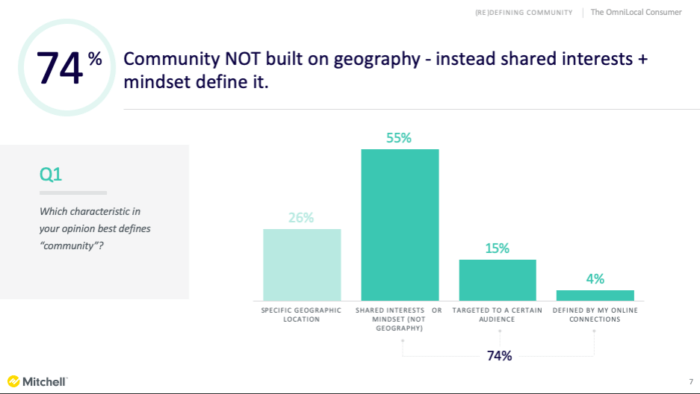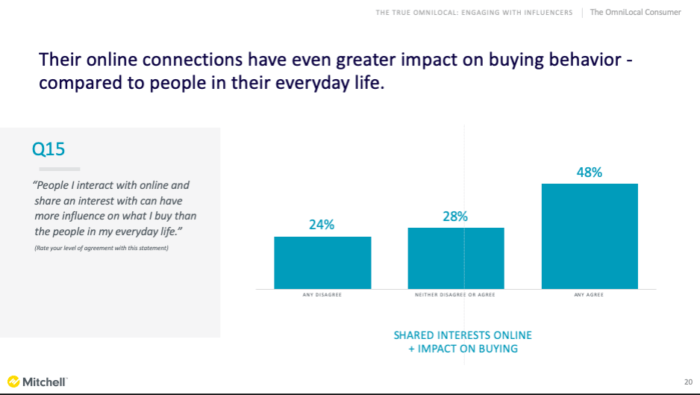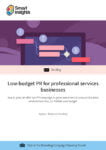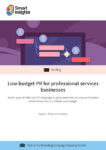PR is all about storytelling, but to do this effectively, you need to keep up to date with the latest channels and tactics.
As multifaceted as it is, PR revolves around one central idea: storytelling. It’s our job to craft stories that connect and inspire — and to deploy those stories through mass communication channels. The challenge is that these channels are constantly shifting with generational and societal trends, interests, and preferences.
As an industry, we’re tasked with staying on top of — and even ahead of — the changing communications landscape to continue delivering effective messages to audiences.
A dynamic landscape
Before we look forward, let’s take a look at how we got here. The widespread introduction of cable in the ’60s and ’70s increased our access to information. Within just a few decades, the way we consumed information further transformed with, first, the proliferation of home computers and, then, the introduction of social media.
The first social media site launched in 1997, and it sparked a movement. Thanks to the continual growth of internet usage, social media became ingrained in our everyday lives.
How social media has changed PR
This rapid evolution massively altered the way consumers learned about new products and brands — and that, in turn, made PR more accessible than ever. Large corporations previously dominated the market with expensive television messaging and online advertising. With the advent of social media, however, certain communication platforms have become available to everyone.
Businesses might not have the budget for an agency partner, but with a few smartphones and technological finesse, they can still manage their social media profiles effectively and drive consumer engagement.

On the flip side, the fact that everyone has the means to create and deploy content makes it even more difficult for a singular brand to get noticed — much less go viral. Consumers are so overrun with content that they decide whether to leave a webpage within 10 seconds of arriving.
Despite the constant technological shifts throughout history, PR has remained a staple. We can trace its origins back to the early 20th century, and since then, it’s evolved into a valued industry. A recent report showed that PR grew by more than 5% between 2013 and 2018, and it generated $16 billion in revenue in 2018 alone.
This is due, in part, to a steadfast demand. Companies will always need PR, but the difference between those in PR who thrive and those who falter comes down to how well they can stay on top of trends.
Adapting to new PR trends
Understanding and leveraging these trends has as much to do with consumers themselves as it does with the platforms they use. Companies are becoming more ambitious in how they reach consumers. For their part, PR professionals are constantly overhauling their approaches because they know today’s trends could become obsolete tomorrow.
The following are up-and-coming trends and best practices PR professionals need to be in the know about.
1. More consumer-driven messaging
Online media has become the go-to source of content for modern consumers. As a result, we’ve seen a general shift away from traditional PR. Writing a press release and sending it off to various publications is no longer an efficient way to spread your message; instead, you must provide journalists and others the right ingredients to cover your story in a meaningful way.
When you think of how you want your client’s brand to be seen, you must consider how to best reach consumers and how to send a message that will make a real impact.
That’s probably why nearly half of PR pros and 60% of marketing leaders believe the two disciplines will become intertwined in the near future. Some have already gotten on board with this idea by combining their PR and advertising agencies, while others are including PR strategies within their marketing packages.
As marketing and PR continue to merge, we’ll see each gain a better understanding of the other — and how they can work together to drive messaging with a consumer-first strategy.

2. Better analytics
Measuring the impact and value of campaigns has always been one of PR’s most prominent obstacles. When social media first busted onto the scene, PR professionals focused on measuring likes, comments, and shares, but more and more, we’re realizing that this isn’t the best way to gain an understanding of the effectiveness of a message. Even impressions, the number of possible viewers on a piece of content, has fallen out of favor.
Thankfully, new analytic tools and devices have helped the industry increase its credibility.
Rather than tracking views or potential views, we need to start focusing on tracking conversion rates. Measuring how many people scanned a call to action isn’t doing much to show how efficient the content was, but seeing who actually followed through can be a great tool for figuring out what content works best and why.
3. The rise of audio
As voice-operated technology continues to advance, the way consumers search for information will continue to change. Nearly two-thirds of 25- to 49-year-olds speak to their voice-enabled devices once a day — at least. And by next year, it’s estimated that 30% of all web browsing sessions will be screenless.
Digital voice assistants such as Google Home are already changing the way people use their smartphones. Two-thirds of people who reported using voice assistants also reported using their phones less often. Undoubtedly, voice search is changing the way readers find and digest information, and our SEO strategies must shift alongside these new habits.
4. The value of integrity
Technological advancements impact more than just the kinds of devices consumers use. For instance, as consumers encounter more — and sometimes conflicting — digital content, they become increasingly concerned about the trustworthiness of sources. Perhaps that’s one reason premium content will soon be a popular service offered through the news industry. If there’s a price tag attached to the content, it implies credibility.
Considering that more than 70% of consumers want companies to be more transparent in featuring policies related to animal testing, working conditions, and product sourcing, the monetization of content is bound to catch on. And because 63% of consumers are more likely to purchase items from organizations that share their beliefs, this new system has the power to alter the public’s media consumption habits.
Final thoughts
PR has no choice but to constantly evolve with the introduction of new platforms, channels, and devices. That’s what makes great PR practitioners the professionals they are; they learn to adapt in an ever-shifting environment. PR stays ahead by staying real — one thing that will always be relevant.

